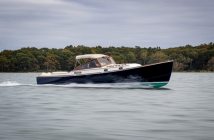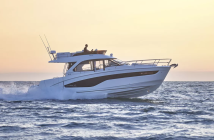Glance aloft at the masthead flies on moored sailboats for the true wind direction. Find flags ashore for more clues. Note any ‘current tails’ streaming from the bases of pilings or markers. These give ‘real time’ information on tidal current direction and speed.
2. Will Your Engine “Answer” in Reverse?
Read enough reports of things going wrong with boat docking scenarios and you’ll see incidents of reverse gear failure. And, I’ve had more boats do wacky things in reverse than in forward propulsion. Without warning, the engine revs up, or shudders and dies.
Before entering the entrance channel leading to a marina, shift into idle reverse gear for 5 to 10 seconds; then into neutral for 1 second; then shift into idle forward gear for 5 to 10 seconds. Repeat this sequence at least two times. Does your engine answer each command smooth and easy?
Also, listen for clunking and grating noises or excessive vibration which signal engine problems. While still in open water, anchor and repair the problem before entering a narrow channel or the confined space of a marina.
3. Do You Know Your Drift Rate?
Make one final test of wind or current if you have the room. Stop the forward momentum of the boat a few boat lengths off the pier. Allow her to drift for 20 to 30 seconds to understand how the combined elements of wind and current will affect your boat.
If practical, make all docking approaches with the bow pointed into the elements (or as close as possible). This puts you in control in any docking situation no matter the size or type of vessel.
Once you begin your approach, you may find the wind or current setting you into the docking space a bit too fast. Use some rudder and throttle to turn the bow fast into the elements to slow down your drift and put you back in control. Read more:




